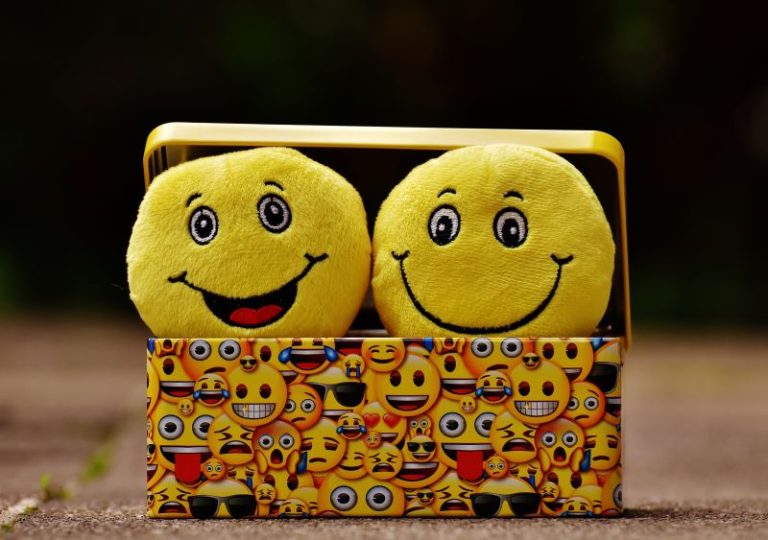Emotions.
Happy. Sad. Tired. Mad. Anxious. Silly. Frustrated. Embarrassed. Excited. Sick….
Why does a Speech Language Pathologist care about emotions? How and why do you incorporate them into every single session?
I’m glad you asked! Let me count the reasons.
- The number one reason I ask clients (and family members) how they are feeling at the beginning of a session is to connect with them. It is a wonderful way for them to be seen and heard. It is also helpful to know how they are feeling at the beginning of a session so that I can adjust activities to meet their needs in the moment while working on short and long term speech and/or language goals.
- The second reason is to tame the emotion. If we can label feelings, then they do not have as much control over us. We can talk through a situation or a feeling once we know about it.
- Once we can label an emotion, we can learn what to do with that emotion. What are appropriate ways to act when we are mad, sad, frustrated, anxious, or happy? There are often various emotions, especially frustration and sometimes anxiety, that clients feel while they are trying to communicate with others. If I know a child is frustrated that I am not understanding the word they are trying to say, I can help them work through that frustration, give them strategies they can use to help them get their message across, and hopefully prevent a meltdown.
- My understanding about trauma informed care includes labeling, understanding, and dealing with emotions in an appropriate manner. I am not a counselor, nor do I try to do their job. If things come up that are beyond my scope of practice, I make referrals to appropriate professionals so that my client (or client’s family member) can get the care and resources they need.
- A training I took on dealing with hard behaviors including different diagnoses such as Attention Deficit Hyperactivity Disorder (ADHD) and Oppositional Defiant Disorder kept coming back to emotions. Labeling emotions, knowing what they look like in people, knowing how they feel in your own body, and knowing what to do with different emotions in different situations (home, school, park, etc.) all help kids/people be able to manage their behavior better.
Now that you know why I incorporate work with emotions in each therapy session. Let’s look at how I do this. I start my session by showing the client a handout of The Zones of Regulation. I have not taken any Zones of Regulation trainings so I use the most basic understanding of the program shared by co-workers who have taken the trainings. My understanding is that The Zones of Regulation program is a program to teach self-regulation through understanding and managing emotions. Emotions are categorized into four zones – blue, green, yellow, and red. One of the key understandings of the program is that no emotion is bad. Every emotion is valid but some emotions help us focus and we can learn best when feeling those emotions. Other emotions make it hard to learn and concentrate. Again, clients who go through the program learn how to identify and manage their emotions.
So, I show the client a handout of the Zones of Regulation and ask them how they are feeling right now. There are four pictures of different emotions depicted for each zone as well as a list of several emotions on the handout I am currently using. Some clients like having me label each emotion either from the picture or from the list. I then model how I am feeling at that time. I always model when I am experiencing emotions such as tired, a little under the weather, a little excited, frustrated, or anxious. Often we talk about why we are feeling the way that we are. This can help client’s develop empathy (knowing how someone else feels). If a client cannot tell me, either through words or gestures, how they are feeling, I often offer a guess as to how they are feeling. I let them know either the body language and facial expressions I observe that lead me to that guess or I share the information their caregiver shared with me.
If a client expresses frustration or some other emotion throughout the session, I refer back to the handout and let them know that they can tell me that they are frustrated (or whatever emotion). I expand upon that to tell them how I will respond and how we will work through that emotion together. I also give my clients permission to tell me “no” and “stop”. It is important to me that clients have as much autonomy over themselves as they can and are able to freely communicate with me within the bounds of the authority I have over them as their speech language therapist. That might be a topic of discussion for another blog post, so I digress.
Depending upon the client and their goals, I might also point out and discuss how different people are feeling while reading books and looking at pictures. Sometimes nursery rhymes and songs also address emotions. The song “If You’re Happy and You Know It” can be helpful to sing and I have also changed the emotion in the song from “happy” to “mad” or “tired”. Changing the actions to match the emotion is a great way to practice acceptable behaviors for specific emotions.
Sometimes caregivers will ask advice on how to help their child deal with emotions better. I am always willing to give what limited suggestions and strategies I have. If it is more than the basics, I assist them in finding community and online resources. Sometimes caregivers want to target verbal expression or labeling of emotions with their child. That falls well within my scope of practice and I can assist them with this skill even if it is not made into a formal goal on which I document.
We all experience emotions. Sometimes it is easy to deal with them and sometimes it is not. Teaching children from an early age how to label and identify emotions, know what different emotions feel like in their bodies, and learn how to appropriately act upon their feelings will help give children life long skills that will impact every other area of their lives. It can also help teach them resilience which will help them make it through the hard times in life.
What will you implement in your day to day routines to teach your kids about emotions?



